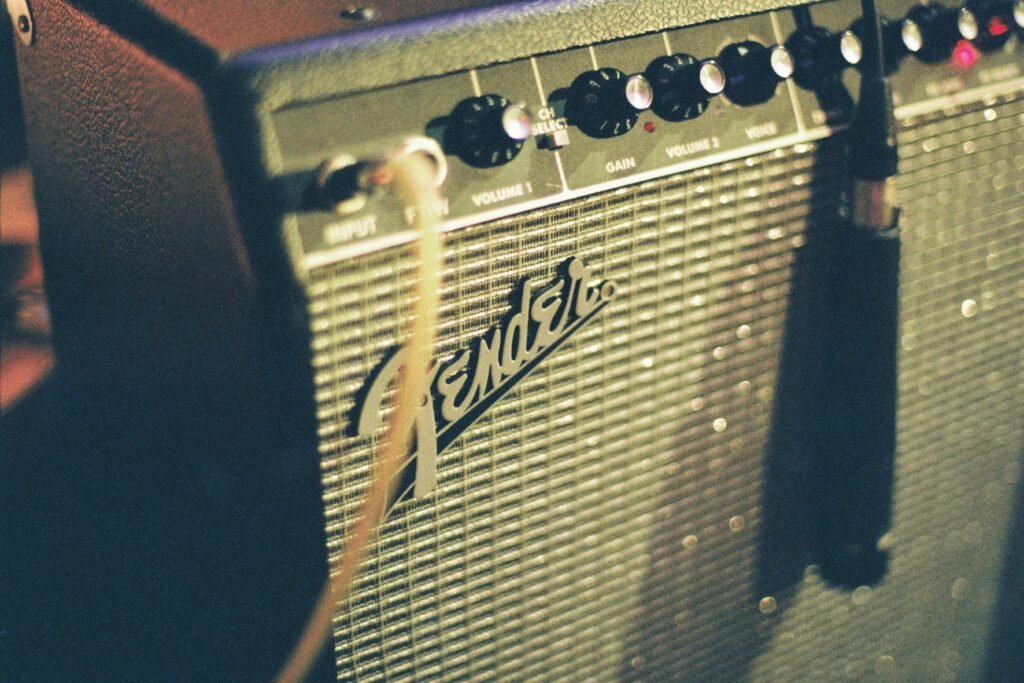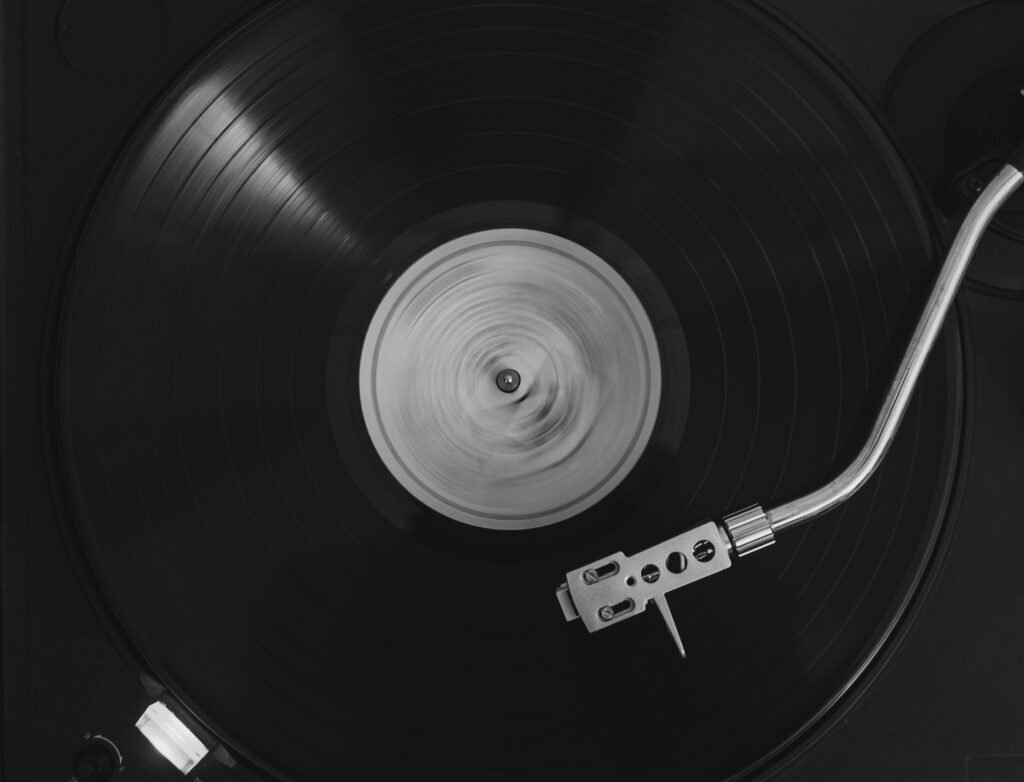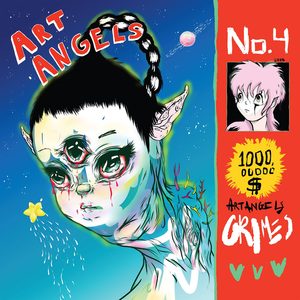When Art Angels came out in 2015, it marked a bold shift for Grimes, the musical project of Claire Boucher. Her earlier album Visions had built a cult following with its dreamy, lo-fi synth pop, but Art Angels sounded louder, brighter, and more direct. It traded some of the murky textures of her past work for sharper production and more pop-driven energy. This wasn’t just an evolution — it was a reinvention.
Grimes made it clear that this album was about control. She wanted to show that pop music could be made on her own terms. She produced and engineered the whole album herself, proving she didn’t need a big team to create a big sound. With Art Angels, she blended genres like J-pop, industrial rock, and electronic dance music into something unique. Each track feels like its own universe, yet they all fit together under her fearless vision.
Sonic Exploration

Art Angels is a sonic collage that manages to feel both chaotic and carefully crafted. The production is crisp, punchy, and full of color. Each track is layered with detail, from tight drum programming to bursts of strings, guitars, and synthetic textures. Unlike the hazier, bedroom-made feel of Visions, this album sounds like it was built for big speakers. Yet it never loses Grimes’ distinct DIY edge. The clarity of the mix lets each part shine without overwhelming the listener — a feat considering how much is packed into each song.
The arrangements throughout the album are bold and unpredictable. Vocals shift in pitch and tone, often transforming within the same track. One moment she’s whispering over a delicate synth line, and the next she’s shouting through a punk-fueled chorus. Strings swell and fall, guitars screech, and beats twist in directions that feel both unexpected and precise. Tracks like “Kill V. Maim” throw in cheerleader chants and aggressive yelps over a racing rhythm, while “Flesh Without Blood” balances power-pop hooks with emotional tension. Grimes plays with form in a way that keeps the listener on edge — but never lost.
Genre-wise, the album refuses to sit still. It touches on electropop, industrial, punk, EDM, and even hints of country and classical. But rather than sounding scattered, these influences are fused into something that feels distinctively hers. There’s a clear love for pop’s structure, but Grimes stretches that frame, filling it with textures and ideas you wouldn’t expect in the mainstream. Art Angels doesn’t just borrow from other genres — it reimagines them in her own voice.
Lyrical Analysis

At first glance, the lyrics on Art Angels can seem scattered, but a closer listen reveals a set of themes that speak to power, identity, and transformation. Grimes often writes from multiple personas, allowing her to explore ideas from different angles. There’s a theatrical quality to the album — characters rage, mourn, and celebrate in bursts of vivid language. Many songs focus on the struggle for control, whether in relationships, the music industry, or the self. “Kill V. Maim,” for example, channels a vampire-like character who revels in chaos, flipping gender norms and violence into a pop anthem. Meanwhile, “California” hides bitterness and betrayal beneath a sunny, upbeat melody.
Recurring motifs include violence as metaphor, the tension between vulnerability and strength, and the blending of human and non-human voices. Grimes’ lyrics often blur the line between reality and fantasy, which gives the album a surreal edge. She’s not telling one story — she’s building a world where contradictions coexist. This layering adds depth and invites multiple interpretations.
The poetic style of the writing leans more abstract than literal. Grimes prefers suggestive imagery and fragmented thoughts over clear narratives. This can make the lyrics feel elusive at times, but that’s part of their power. They draw you in, ask you to sit with uncertainty, and let your own meaning emerge. There are moments of sharp wit, too, where she cuts through the noise with a single, striking line.
Emotional Impact
Emotionally, the lyrics can be jarring or deeply moving. Some songs burn with defiance, others ache with longing or confusion. The shifts in vocal delivery — from soft and ghostly to brash and confrontational — heighten the emotional stakes. Even when the words are cryptic, the feeling behind them is clear. It’s this tension between clarity and mystery that gives Art Angels much of its lyrical impact.
Cohesion and Flow

Art Angels is a dense, high-energy album, and its flow reflects that intensity. From the start, it charges ahead with little pause. While the transitions between tracks aren’t always smooth in a traditional sense, they carry a kind of emotional momentum. The album opens with the haunting “laughing and not being normal,” a brief instrumental that sets an eerie tone, before launching into the bright fury of “California” and the wild, genre-bending ride that follows. There isn’t a single, obvious narrative arc, but there’s a noticeable shift from confrontation and chaos toward more reflective and somber tones by the end, especially in tracks like “Life in the Vivid Dream” and “Butterfly.”
The emotional and sonic pacing is more rollercoaster than linear journey, but that seems intentional. Grimes builds a world where extremes live side by side — joy can sound aggressive, sadness can feel sweet. Some transitions are jarring, but they’re rarely random. Instead, they seem designed to keep listeners awake and alert, pulling them into a space where each track demands attention on its own terms.
Despite the album’s range of styles and personas, there’s a strong sense of unity. This comes from the consistency in production, the distinct vocal treatments, and the way themes echo across different songs. Identity, control, alienation, and reinvention come up again and again, binding the album’s diverse sounds into a shared emotional core. Even when a track seems like a departure, it still feels like part of the same world.
Standout Tracks and Moments
Several tracks on Art Angels rise above the rest, not just as fan favorites, but as clear statements of Grimes’ artistic ambition.
Flesh Without Blood
“Flesh Without Blood” is the album’s most accessible moment — a near-perfect pop song layered with emotional bite. The track’s shimmering guitars and crisp drums create a sunny surface, but the lyrics hint at deeper betrayal and detachment. It’s a bittersweet anthem, balancing melodic charm with emotional complexity.
Kill V. Maim
“Kill V. Maim” is perhaps the album’s most explosive track. Its manic energy, gang vocals, and aggressive shifts in tempo make it feel like a battle cry. Grimes channels an alien-like character who moves through gender, violence, and glamor with wild freedom. It’s not just a standout because of its sound — it’s a declaration of intent, showing how far she’s willing to push pop conventions.
Realiti
“Realiti,” originally released as a demo, stands out for its emotional openness. The final album version preserves the track’s dreamy, flowing quality while tightening the production. It’s one of the few moments where the tempo relaxes, giving space for reflection. The chorus floats above the beat, evoking a sense of longing and disconnection.
Memorable Moments
Among the most memorable moments is the sudden shift in “Venus Fly,” featuring Janelle Monáe. The track builds tension through staccato strings and bursts into a defiant chant that turns a club banger into a manifesto. Another striking moment comes in “Life in the Vivid Dream,” a brief but haunting song that uses minimal instrumentation to let Grimes’ voice carry raw emotion. It’s a quiet interlude that speaks volumes.
Artistic Contribution and Innovation

Art Angels carved out a space that didn’t quite exist before it. In the landscape of mid-2010s pop, the album felt like a deliberate counterpoint to both the hyper-polished mainstream and the lo-fi indie sphere. Grimes positioned herself outside traditional industry structures, handling nearly every aspect of the record herself — from writing and producing to mixing and visual art. In doing so, she not only made a powerful creative statement but also challenged assumptions about what a pop artist could be.
Within the genre, Art Angels is hard to pin down. It draws from electropop, art rock, industrial, and even K-pop, yet refuses to settle into any one category. This fluidity became one of its most influential traits. At a time when pop was starting to open its doors to weirder, more personal visions, Grimes showed how far that door could swing. She didn’t just bend genre rules — she ignored them altogether and built her own.
Innovation
One of the album’s most striking innovations is how it pairs extreme contrasts. It’s loud and soft, catchy and dissonant, emotional and absurd. Tracks like “Kill V. Maim” demonstrate how theatrical and aggressive pop can be, while still holding space for melody. Meanwhile, songs like “Realiti” and “Belly of the Beat” experiment with ambient textures and complex emotional tones, showing that innovation doesn’t always mean maximalism.
Thematically, the album also broke ground. It tackles identity, autonomy, and gender fluidity in ways that were not yet common in pop. Grimes’ use of personas allowed her to explore these ideas without preaching, embedding them in sound and character instead of overt statements. This artistic distance gave listeners freedom to interpret — or simply enjoy — without losing depth.
Closing Thoughts

Art Angels stands as a fearless and uncompromising statement from an artist at a creative crossroads. Its strengths lie in its bold production, genre-defying approach, and the sheer scope of Grimes’ ambition. The album refuses to conform, yet still delivers hooks and emotional resonance that stick with the listener long after the music ends. Its eclectic nature may feel overwhelming at times, and some listeners might find its abrupt tonal shifts or abstract lyrics hard to grasp. But those are the same qualities that give it lasting intrigue.
This is a record that rewards multiple listens. Each track unveils new layers, whether in the intricate arrangements, the sharp vocal contrasts, or the cryptic lyrical themes. It challenges the idea of what pop can be, and in doing so, it opens doors for other artists to follow suit. It’s a milestone in Grimes’ career — a leap forward that cemented her as not just a producer or performer, but a true auteur.
Official Rating: 9/10
This score reflects the album’s rare balance of vision and execution. It’s not perfect, but its imperfections are part of its charm. Art Angels is chaotic, brilliant, and defiantly original — an album that doesn’t just reflect its time, but helps shape the future of pop.
